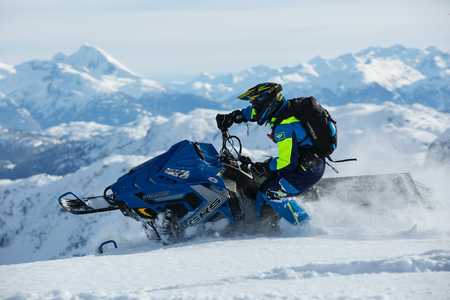Common Snowmobile mechanical issues
- Home
- Blog
- Snowmobiles
- Common snowmobile mechanical issues
There are several common mechanical issues that can occur with snowmobiles:

- Engine problems: Snowmobiles rely on their engines to function properly, and engine problems are some of the most common issues that can arise. These can include issues with the spark plugs, carburetor, or fuel system.
- Clutch problems: The clutch is an important component of a snowmobile, and it can wear out or become damaged over time. This can lead to problems with acceleration, shifting gears, or engaging the drivetrain.
- Drivetrain problems: The drivetrain is responsible for transferring power from the engine to the track, and problems with this system can affect a snowmobile's performance. This can include issues with the chain, sprockets, or drive belt.
- Suspension issues: The suspension system is responsible for providing a smooth ride, and problems with this system can lead to a rough or uncomfortable ride. This can include issues with the shocks, springs, or other components of the suspension system.
- Electrical problems: Electrical issues can be caused by a variety of factors, including problems with the battery, alternator, or wiring. These issues can affect the snowmobile's lighting, starting, and charging systems.
The drivetrain of a snowmobile is responsible for transferring power from the engine to the track. It includes components such as the chaincase, drive belt, and drive sprockets. Issues with the drivetrain can cause problems with the overall performance of the snowmobile.
Some common drivetrain issues include:
- Worn or damaged drive belts: The drive belt is a key component of the drivetrain, and it can become worn or damaged over time. This can cause the belt to slip or fail completely, resulting in reduced power to the track.
- Problems with the chaincase: The chaincase is responsible for enclosing the drive chain and protecting it from snow and ice. Issues with the chaincase, such as a damaged or worn chain, can cause problems with the transfer of power from the engine to the track.
- Drive sprocket problems: The drive sprocket is a component that connects the drive chain to the track. Worn or damaged drive sprockets can cause problems with the transfer of power to the track and may result in reduced performance.
Some common engine problems that can affect snowmobiles include:
- Overheating: The small, high-performance engine in a snowmobile generates a lot of heat, and if it becomes too hot, it can cause serious problems. Overheating can lead to engine damage, reduced performance, and even engine failure.
- Fuel system problems: The fuel system of a snowmobile is responsible for delivering fuel to the engine. Issues with this system, such as a clogged fuel filter or a leaking fuel line, can cause problems with engine performance and may even prevent the snowmobile from starting.
- Worn or damaged engine parts: The engine of a snowmobile is subjected to a lot of wear and tear, and over time, certain parts may become worn or damaged. This can lead to reduced performance, or even engine failure if not addressed.
- Electrical issues: The electrical system of a snowmobile is responsible for powering various components, such as the ignition and lighting. Issues with this system can cause problems with starting the engine or prevent it from operating correctly.
The clutch of a snowmobile is a mechanical device that is responsible for transferring power from the engine to the drivetrain. It consists of a series of discs and springs that engage and disengage to allow the snowmobile to accelerate and decelerate smoothly.
Problems with the clutch can cause issues with acceleration and overall performance. Some common clutch issues include:
- Worn or damaged clutch components: The clutch discs and springs can become worn or damaged over time, which can cause problems with the transfer of power from the engine to the drivetrain.
- Incorrect adjustment: The clutch must be properly adjusted in order to function correctly. If it is not adjusted properly, it can cause problems with acceleration and overall performance.
- Clutch slipping: If the clutch is slipping, it means that it is not transferring power from the engine to the drivetrain effectively. This can cause problems with acceleration and may lead to reduced performance.
The electrical system of a snowmobile is responsible for powering various components, such as the ignition, lighting, and gauges. Issues with this system can cause problems with starting the snowmobile or prevent it from operating correctly.
Some common electrical issues that can affect snowmobiles include:
- Dead battery: The battery is a key component of the electrical system, and if it is dead or not functioning properly, it can prevent the snowmobile from starting.
- Corroded or damaged wiring: The wiring of a snowmobile is exposed to the elements and can become corroded or damaged over time. This can cause issues with the electrical system and prevent the snowmobile from starting or operating correctly.
- Faulty ignition: The ignition system of a snowmobile is responsible for providing the spark that starts the engine. If this system is not working properly, it can cause problems with starting the machine.
- Problems with the electrical components: The electrical components of a snowmobile, such as the headlights, taillights, and gauges, can fail or malfunction over time. This can cause issues with the operation of the machine.
If you are experiencing problems with your snowmobile, it is important to have it checked by a trained mechanic as soon as possible. They will be able to diagnose the issue and recommend the appropriate repairs to ensure that your machine is running smoothly.



